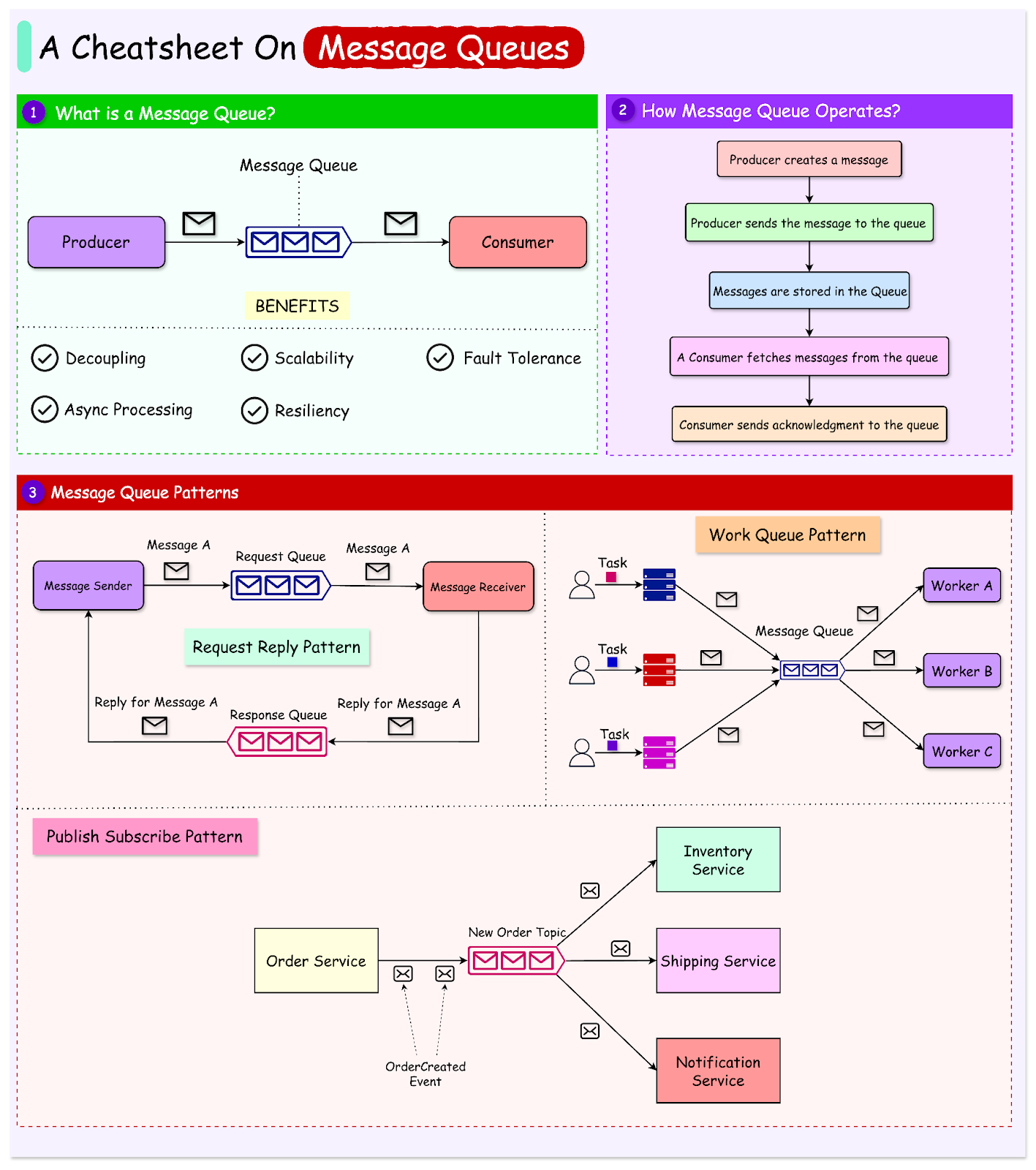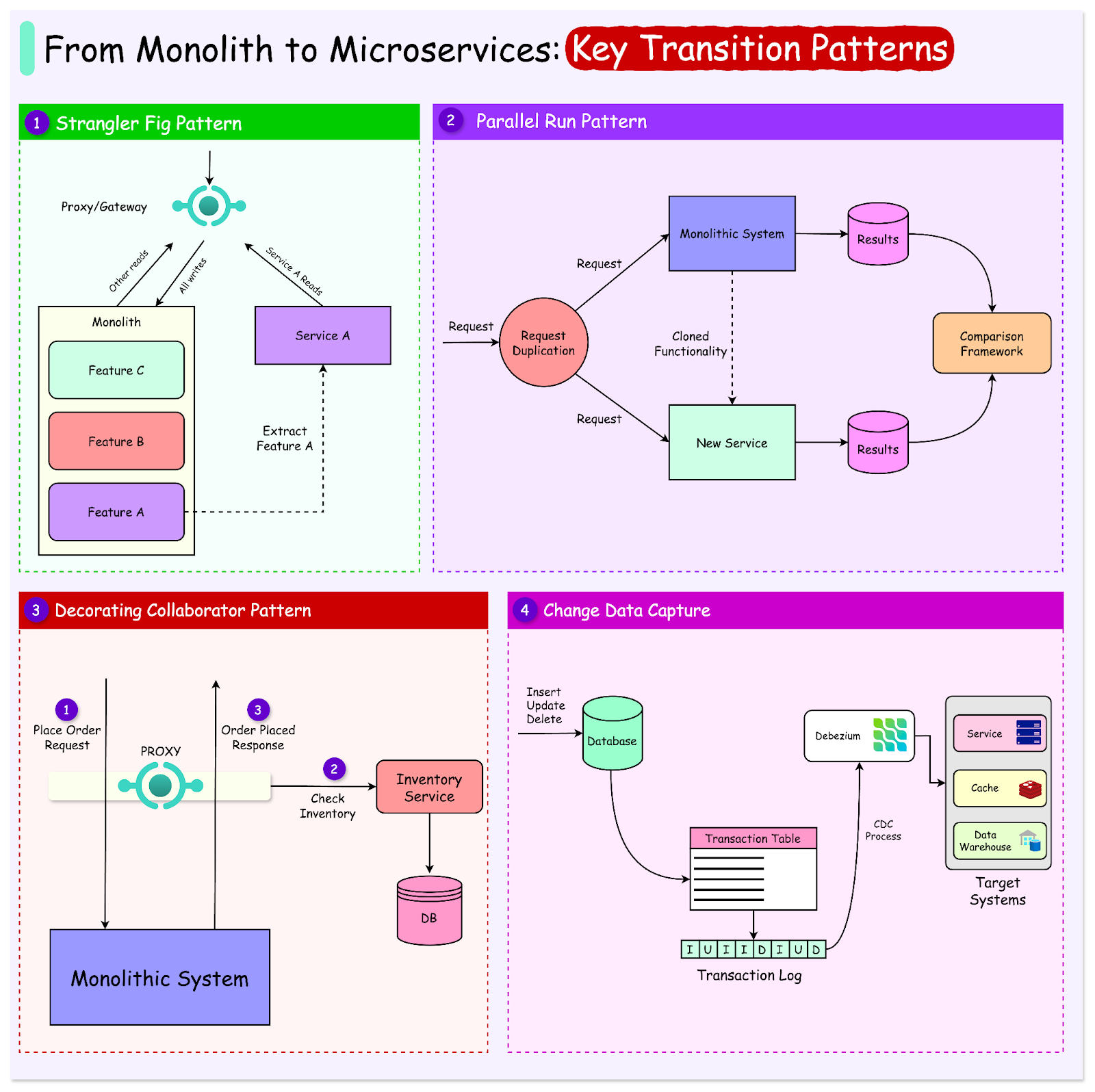Archives
- By thread 5362
-
By date
- June 2021 10
- July 2021 6
- August 2021 20
- September 2021 21
- October 2021 48
- November 2021 40
- December 2021 23
- January 2022 46
- February 2022 80
- March 2022 109
- April 2022 100
- May 2022 97
- June 2022 105
- July 2022 82
- August 2022 95
- September 2022 103
- October 2022 117
- November 2022 115
- December 2022 102
- January 2023 88
- February 2023 90
- March 2023 116
- April 2023 97
- May 2023 159
- June 2023 145
- July 2023 120
- August 2023 90
- September 2023 102
- October 2023 106
- November 2023 100
- December 2023 74
- January 2024 75
- February 2024 75
- March 2024 78
- April 2024 74
- May 2024 108
- June 2024 98
- July 2024 116
- August 2024 134
- September 2024 130
- October 2024 141
- November 2024 171
- December 2024 115
- January 2025 216
- February 2025 140
- March 2025 220
- April 2025 233
- May 2025 239
- June 2025 303
- July 2025 175
-
NEW FHL speaker!!! (+ FREE bonus)
…and the “Franken-funnel” that produces serious $$$26 days away…
26 days away from the GREATEST MARKETING event ever produced – and I can’t wait to serve you with the HIGHEST-CALIBER marketing and business strategies to ensure your 2025 is the most profitable year to date!!!
That is, of course, you already secured your ticket (and grabbed your hotel room using our special discount code)...
If you haven't yet… what’s up?!? You like money, right? And you want to make more of it in 2025, right…??
I thought so, too ;)
So, if you haven’t secured your ticket – as well as the numerous FREE marketing bonuses to help you jump-start your success this year) – then go here now and act now because we are so very close to capacity!! →
Now… onto today’s interview!
Here’s why I’m so pumped about today’s guest – he is someone who has been quietly crushing it “behind-the-scenes”... raking in MILLIONS in sales, and he does it using “mix-n-match” funnel I’ve never seen work before, at least not at the high level Josiah is doing for his clients.
His name is Josiah Grimes!
Josiah’s not someone who goes about bragging about his successes (which is A LOT)… instead, he just shows you the proof, and then reveals exactly what he does to get BOATLOADS of clients saying “YES!” to his high-ticket offers.
WATCH TODAY’S INTERVIEW W/ JOSIAH GRIMES @ 2:00 PM ET →
The funnel he uses is actually a “Frankenstein” funnel – combining two powerhouse funnels into one, and the results are out of this world.
The best part…?
What Josiah teaches works for any business or offer.
Anyway, after he spoke at one of my exclusive mastermind retreats we do for our Inner Circle Members…
…I immediately asked him to speak at Funnel Hacking LIVE in Vegas because I KNOW what he has to share has the potential of changing the lives of our Funnel Hackers (including those they serve)!!
WATCH TODAY’S INTERVIEW W/ JOSIAH GRIMES @ 2:00 PM ET →
That’s it!!!
I’ll see you today at 2 PM ET!Russell Brunson
P.S. Don’t forget, you’re just one funnel away…
P.P.S. Go here to watch my interview with Josiah Grimes @ 2 PM ET (and secure his FREE marketing bonus)!! →
© Etison LLC
By reading this, you agree to all of the following: You understand this to be an expression of opinions and not professional advice. You are solely responsible for the use of any content and hold Etison LLC and all members and affiliates harmless in any event or claim.
If you purchase anything through a link in this email, you should assume that we have an affiliate relationship with the company providing the product or service that you purchase, and that we will be paid in some way. We recommend that you do your own independent research before purchasing anything.
Copyright © 2018+ Etison LLC. All Rights Reserved.
To make sure you keep getting these emails, please add us to your address book or whitelist us. If you don't want to receive any other emails, click on the unsubscribe link below.
Etison LLC
3443 W Bavaria St
Eagle, ID 83616
United States
by "Russell Brunson" <noreply@clickfunnelsnotifications.com> - 12:42 - 17 Jan 2025 -
EMB SPOT Digitalisierung – Exklusives Neujahrsangebot für Sie
Simple Transactional Email
Simple Transactional EmailSimple Transactional EmailSimple Transactional EmailSimple Transactional EmailSimple Transactional EmailSimple Transactional EmailSimple Transactional EmailSimple Transactional EmailSimple Transactional EmailSimple Transactional EmailSimple Transactional EmailSimple Transactional EmailSimple Transactional EmailSimple Transactional EmailSimple Transactional EmailSimple Transactional EmailEmbSpot LLC, 1329 West Pl, Lancaster,PA 19701
Don't like these emails? Unsubscribe.EmbSpot LLC, 1329 West Pl, Lancaster,PA 19701
Don't like these emails? Unsubscribe.EmbSpot LLC, 1329 West Pl, Lancaster,PA 19701
Don't like these emails? Unsubscribe.EmbSpot LLC, 1329 West Pl, Lancaster,PA 19701
Don't like these emails? Unsubscribe.EmbSpot LLC, 1329 West Pl, Lancaster,PA 19701
Don't like these emails? Unsubscribe.EmbSpot LLC, 1329 West Pl, Lancaster,PA 19701
Don't like these emails? Unsubscribe.EmbSpot LLC, 1329 West Pl, Lancaster,PA 19701
Don't like these emails? Unsubscribe.EmbSpot LLC, 1329 West Pl, Lancaster,PA 19701
Don't like these emails? Unsubscribe.EmbSpot LLC, 1329 West Pl, Lancaster,PA 19701
Don't like these emails? Unsubscribe.EmbSpot LLC, 1329 West Pl, Lancaster,PA 19701
Don't like these emails? Unsubscribe.EmbSpot LLC, 1329 West Pl, Lancaster,PA 19701
Don't like these emails? Unsubscribe.EmbSpot LLC, 1329 West Pl, Lancaster,PA 19701
Don't like these emails? Unsubscribe.EmbSpot LLC, 1329 West Pl, Lancaster,PA 19701
Don't like these emails? Unsubscribe.EmbSpot LLC, 1329 West Pl, Lancaster,PA 19701
Don't like these emails? Unsubscribe.EmbSpot LLC, 1329 West Pl, Lancaster,PA 19701
Don't like these emails? Unsubscribe.EmbSpot LLC, 1329 West Pl, Lancaster,PA 19701
Don't like these emails? Unsubscribe.EmbSpot LLC, 1329 West Pl, Lancaster,PA 19701
Don't like these emails? Unsubscribe.
by "EmbSpot LLC" <richard@embspot.com> - 12:30 - 17 Jan 2025 -
Dependency and depopulation? Confronting the consequences of a new demographic reality
Something must give New from McKinsey Global Institute
This email contains information about McKinsey's research, insights, services, or events. By opening our emails or clicking on links, you agree to our use of cookies and web tracking technology. For more information on how we use and protect your information, please review our privacy policy.
You received this email because you subscribed to our McKinsey Global Institute alert list.
Copyright © 2025 | McKinsey & Company, 3 World Trade Center, 175 Greenwich Street, New York, NY 10007
by "McKinsey & Company" <publishing@email.mckinsey.com> - 10:42 - 17 Jan 2025 -
[MS: Part 2 of 5] I Quit!
I broke a world record to make $3.2 million after a 90-minute seminar presentation.. but it wasn’t always this way!Hey,
Last year at FunnelHacking Live, I did a presentation that brought in a whopping $3.2 million in just 90 minutes!
It was a record-breaking moment, but it wasn’t always that way.
Twenty years ago, I gave my first-ever live sales presentation, and it was a complete disaster.I had just seen speaker after speaker make over $50,000 with their pitches.
But when it was my turn, everything went wrong.
- The sound guy messed up my grand finale with motivational music.
- Not a single person stood up to get my offer at the back of the room.
- Just TOTAL SILENCE.
It was horrible.I felt so embarrassed and defeated.
I locked myself in my hotel room for two days, watching movies and bingeing on Haagen Daaz and coconut shrimp, thinking, “I QUIT!”
But everything changed when I discovered a couple of ‘secrets.’
Here's a little backstory: My obsession with sales presentations started in the early 2000s when I attended an Armand Morin seminar.The first speaker's pitch caused a TABLE RUSH! People were literally jumping over chairs and tables to pay $2,000 for the offer.
I counted 20, then 25, then 30 people… the speaker made over $60,000 in minutes!
I knew I had to learn this skill.So, a couple of years later I got another chance.
A friend asked me to speak at their event, I was thrilled. I worked tirelessly on my presentation.
But back then, I was super shy and awkward. I crammed my pitch into the last 20 seconds of my talk, and it flopped.
Quitting was all I could think about!
I had convinced my wife, my family, and my friends that my life was going to change.My wife was working two jobs to support us, and I felt like a failure.
Then, I attended another conference and had an epiphany: There were speakers who looked, talked, and dressed like me, making over $60,000 in an hour.What if this was a learnable skill?
What if this was a learnable skill? What if there were specific methods, techniques, and tricks I could learn from top speakers?
Once I embraced this idea, everything changed. I did a sales pitch that closed 60% of the entire room!
In my next email, I'll share the ‘secrets’ that got me there.
Look out for [MS: Part 3 of 5] The Perfect Webinar!
Talk tomorrow,Russell Brunson
© Etison LLC
By reading this, you agree to all of the following: You understand this to be an expression of opinions and not professional advice. You are solely responsible for the use of any content and hold Etison LLC and all members and affiliates harmless in any event or claim.
If you purchase anything through a link in this email, you should assume that we have an affiliate relationship with the company providing the product or service that you purchase, and that we will be paid in some way. We recommend that you do your own independent research before purchasing anything.
Copyright © 2018+ Etison LLC. All Rights Reserved.
To make sure you keep getting these emails, please add us to your address book or whitelist us. If you don't want to receive any other emails, click on the unsubscribe link below.
Marketing Secrets
3443 W Bavaria St
Eagle, ID 83616
United States
by "Russell Brunson" <newsletter@marketingsecrets.com> - 03:44 - 17 Jan 2025 -
Viktory Gym - opzioni di pagamento flessibili
Ciao team di Viktory Gym!
Avete bisogno di più opzioni di pagamento per i vostri clienti? Qomodo offre piani rateali senza interessi per le spese essenziali. Siamo partner di Mastercard per fornire soluzioni di pagamento intelligenti per PMI come la vostra.
Oltre 500 aziende stanno crescendo con le nostre opzioni di pagamento digitali e flessibili. I vostri clienti ottengono più scelta, voi venite pagati immediatamente.
Sareste interessati a programmare una chiamata di 10 minuti per esplorare questa opportunità?
by gianluca@smartqomodo.com - 03:12 - 17 Jan 2025 -
Trusted Supplier of Hydraulic Presses
Dear info,
At Nantong Zhibo Hydraulic Machinery Co., Ltd., we believe in providing reliable, efficient, and customized hydraulic machinery solutions. We are proud to support businesses like yours with high-quality equipment, trusted by clients in numerous countries worldwide.
Our key products include:
· Four-column hydraulic presses for compression molding and assembly.
· Special hydraulic presses for precision applications.
· Kneaders for specialized industrial needs.
We combine advanced production technology, a highly skilled workforce, and a commitment to "quality-oriented, customer-first" service. All our products meet international standards, ensuring they perform reliably in demanding environments.
If you'd like to know more or request a quote, please feel free to contact me. We look forward to working with you!
Kind regards,
Nantong Zhibo Hydraulic Machinery Co., Ltd.
by "tony" <tony@top-hydraulicpress.com> - 03:00 - 17 Jan 2025 -
Urgently Need Logistics Servers in Your Country
Dear colleague,
Greeting from Sabrina at GLA, hope this email finds you well.
Kindly I'm wondering if you provide the services of Sea Freight or Air Freight, Trucking, and Customs Clearance in your country? Cause we got a lot of requests from our clients.
We are looking for a logistics server with outstanding services in your country; we kindly need your assistance urgently.
Sincerely await your reply!
Best Regards

Sabrina Zhang
Overseas Business Development DepartmentM +86 0755-25126507
P 18948187022
E member886@glafamily.com member889@glafamily.comGlobal Logistics Alliance
2109, 21st Floor, HongChang Plaza, Shennan Dong Road NO 2001, Luohu district, Shenzhen, Chinawww.glafamily.com 【Notice Agreement No 7】
7. The GLA president reserves the right to cancel or reject membership or application.
The company shall cease to be a member of GLA if:
a) the Member does not adhere to GLA terms and conditions
b) the Member gives notice of resignation in writing to the GLA.
c) No good reputation in the market.
d) Have bad debt records in the GLA platform or in the mark
by "GLA family" <member889@glafamily.com> - 02:56 - 17 Jan 2025 -
A set of essential questions for CEOs
On McKinsey Perspectives
18 key questions Brought to you by Alex Panas, global leader of industries, & Axel Karlsson, global leader of functional practices and growth platforms
Welcome to the latest edition of Only McKinsey Perspectives. We hope you find our insights useful. Let us know what you think at Alex_Panas@McKinsey.com and Axel_Karlsson@McKinsey.com.
—Alex and Axel
•
Flying blind. Aircraft pilots use checklists before, during, and after flights to make sure they’re doing all they can to have a smooth trip. But CEOs rarely use such checklists, according to McKinsey senior partners Carolyn Dewar, Kurt Strovink, Scott Keller, and Vik Malhotra. In the research for their New York Times best-selling book, CEO Excellence, they found that many of today’s business leaders are awash in metrics but lack the systematic tools and approaches that could help them translate data into action.
•
Asking the right questions. McKinsey conducted in-depth interviews with more than 70 successful CEOs to understand the practices and habits that support strong organizational performance. Drawing on these findings, the authors developed an essential checklist of questions, across six categories, that every CEO should be able to answer: everything from direction setting to personal effectiveness. Explore (and download) the full list of key questions for CEOs, and visit our World Economic Forum 2025 page to get a sneak peek of the global issues that many leaders will be addressing at Davos next week.
—Edited by Seth Stevenson, senior editor, New York
This email contains information about McKinsey's research, insights, services, or events. By opening our emails or clicking on links, you agree to our use of cookies and web tracking technology. For more information on how we use and protect your information, please review our privacy policy.
You received this email because you subscribed to the Only McKinsey Perspectives newsletter, formerly known as Only McKinsey.
Copyright © 2025 | McKinsey & Company, 3 World Trade Center, 175 Greenwich Street, New York, NY 10007
by "Only McKinsey Perspectives" <publishing@email.mckinsey.com> - 01:42 - 17 Jan 2025 -
Getting fit for growth, navigating geopolitical uncertainty, a new demographic reality, and more: The Weekend Read
Unwind with these highlights Brought to you by Alex Panas, global leader of industries, & Axel Karlsson, global leader of functional practices and growth platforms
Welcome to the latest edition of The Weekend Read. We hope you find our perspectives useful. Let us know what you think at Alex_Panas@McKinsey.com and Axel_Karlsson@McKinsey.com.
—Alex and Axel

The journey to growth is a marathon, not a sprint. To get there, leaders need a holistic approach with courage and resilience at the core. Top leaders achieve their goals by turning five mindsets into action, write Andy West, Greg Kelly, Jill Zucker, Michael Birshan, and coauthors.
Roll up your sleeves Ready to unwind?
—Edited by Joyce Yoo, editor, New York
Share these insights
Did you enjoy this newsletter? Forward it to colleagues and friends so they can subscribe too. Was this issue forwarded to you? Sign up for it and sample our 40+ other free email subscriptions here.
This email contains information about McKinsey's research, insights, services, or events. By opening our emails or clicking on links, you agree to our use of cookies and web tracking technology. For more information on how we use and protect your information, please review our privacy policy.
You received this email because you subscribed to our McKinsey Global Institute alert list.
Copyright © 2025 | McKinsey & Company, 3 World Trade Center, 175 Greenwich Street, New York, NY 10007
by "McKinsey Weekend Read" <publishing@email.mckinsey.com> - 12:54 - 17 Jan 2025 -
Wanna hang with me backstage at FHL?!?
This is your “golden ticket” opportunity…Have you secured your FHL 10 tickets yet?? If you’re one of those people who waits until the last second to grab them, you might just be missing out on a ✨GOLDEN✨ opportunity…
Here’s what I mean:
On January 27th we will be randomly selecting ONE lucky FHL ticket holder to win a VIP GOLDEN TICKET EXPERIENCE at Funnel Hacking LIVE 10!!!!
SECURE YOUR FHL TICKETS NOW TO BE AUTOMATICALLY ENTERED!! →
What’s included in the VIP Golden Ticket experience? Check it out:
Meet ME (Russell Brunson!!) backstage at FHL!! Join me backstage where we can chat, take pictures and get some autographs!
Get an exclusive behind-the-scenes look of the event!! Go “behind the curtain” to see exactly what it takes to put on a marketing event of this magnitude (hint: It’s A LOT.) With this being the last FHL, NO ONE will get a chance like this again!
Access to the VIP lounge!! Join the other VIPs in a more comfortable, less crowded setting where you can relax AND possibly discover some game-changing networking opportunities!
Reserved FRONT ROW seat for every single speaker!! Sit up close with TONY ROBBINS, Prince EA, Eileen Wilder, Dan Kennedy and literally every other FHL speaker as they deliver their life-changing presentations!!
Room UPGRADE to a SUITE* Spend the last ever Funnel Hacking Live in luxury and style in your very own hotel suite!! (*must have previously booked your standard room at Harrahs or the Linq)
And last but certainly not least…
Complimentary access to the ‘Day With Dan’ event!! February 11th, the master of direct response marketing himself will be presenting LIVE three ‘mini events’ the day before FHL officially kicks off, and YOU will gain access to the ENTIRE DAY of unimaginably valuable information –Mini event #1 – “My Adventures In 40 Years In Direct Marketing And Their Eternal Lessons”
Mini event #2 – “Methodology That I Took From Varied Sources For MY ‘Success System’ That Never Fails”
Mini event #3 – “How To Develop Into ‘The Radical’ Who Attracts Exceptionally HIGH-VALUE Lifetime Customers”
Before retiring, Dan typically charged upwards of $20k for a full day of consulting/mentoring…
This chance to hear him share some of the most VALUABLE information he has to offer is a RARE, once in a lifetime opportunity that will likely not happen again (especially given the fact that Dan no longer agrees to live speaking engagements!)
RESERVE YOUR FHL TICKETS NOW TO BE ENTERED IN THE DRAWING FOR FREE →
If you’ve already purchased your FHL 10 ticket, good news! You’ve already been entered into the drawing for the VIP Golden Ticket Experience. No need to take any additional steps!
For those who are still on the fence OR simply plan on buying their tickets last minute…
Remember, the one lucky winner will be randomly drawn Monday, January 27th!
If you have not gotten your tickets before then, your name will NOT be in the drawing!
Since this is the VERY LAST Funnel Hacking Live, there will NEVER be an opportunity for this kind of VIP experience ever again.
Grab your FHL tickets ASAP and make sure you don’t miss out on this chance to upgrade your FHL experience from unforgettable to LEGENDARY!!
GET YOUR FHL TICKETS NOW TO BE AUTOMATICALLY ENTERED FOR THE VIP GOLDEN TICKET EXPERIENCE!! →
See you backstage!
Russell Brunson
P.S. Don’t forget, you’re just one funnel away…
© Etison LLC
By reading this, you agree to all of the following: You understand this to be an expression of opinions and not professional advice. You are solely responsible for the use of any content and hold Etison LLC and all members and affiliates harmless in any event or claim.
If you purchase anything through a link in this email, you should assume that we have an affiliate relationship with the company providing the product or service that you purchase, and that we will be paid in some way. We recommend that you do your own independent research before purchasing anything.
Copyright © 2018+ Etison LLC. All Rights Reserved.
To make sure you keep getting these emails, please add us to your address book or whitelist us. If you don't want to receive any other emails, click on the unsubscribe link below.
Etison LLC
3443 W Bavaria St
Eagle, ID 83616
United States
by "Russell Brunson" <noreply@clickfunnelsnotifications.com> - 10:14 - 16 Jan 2025 -
2025 New Style Runzhi Ergonomic Chair Factory 106C


Product Sale Blog Runzhi Office Deals on Home Decor!
Get ready for the new style chair! We are producing factory here, and we're excited to bring you incredible deals!
Shop now Product Categories

5
Years in Business

10k
Happy Customers

23k
Products Sold
Our Advantages

Quality Assurance
We only offer premium furniture and decor.

Recycle
The material is environmentally friendly.

Expert Assistance
Our team is here to help you find the perfect pieces.
Featured Products

Contemporary Mid-back Mesh Chair Black | ¥145.99

Contemporary Mid-back Mesh Chair Grey | ¥165.99

Contemporary Mid-back Mesh Chair Grey
Visit our store or shop online
Shop now Contact Us
Connect with Us




Runzhi office chair are available for many style of office chair making, so come and get today!

by "Manager-02" <Manager-02@runzhioffice.com> - 09:41 - 16 Jan 2025 -
Potential Partnership Opportunity
Dear info ,
I hope this email finds you well. My name is Lila, and I am Foshan Runzhi Furniture Co., LTD. at Manager. We specialize inDesign and Manufacturing of Office Chairs.
I am writing to explore a potential partnership between our companies.We believe that our product could greatly benefit your business.
Here are some key points about our offering:
[Key Point 1]: Our company has a mature workflow of 20 years in designing and manufacturing office chairs, ensuring that our products are of high quality and meet strict quality control standards.
Our company can be customized according to customer needs, one-to-one solution for customers who need personalized solutions.
[Key Point 2]:Our products utilize the latest professional technology and high-tech materials, boasting unique features that prioritize environmental protection. They can significantly improve the efficiency of businesses with specific environmental requirements. Compared to other products, ours offer notable advantages in terms of price, such as reducing the cost of similar products by 5%. Additionally, our products have been certified by BIFM, ensuring their high quality and reliability. Many of our customers have reported cost savings and a 50% increase in business efficiency after using our products.
[Key Point 3]:Our company boasts a dedicated sales team, comprised of young professionals with extensive product knowledge. They are committed to providing excellent service to ensure a seamless and enjoyable experience for all our customers.
We are confident that a collaboration could be mutually beneficial, and we would love to discuss this opportunity further with you.Could we schedule a call next week to explore this in more detail?
Thank you for considering this proposal.I look forward to your positive response.
Best regards,
Lila
Mananger
[Whats'App:13924825558 / Lina01@rzfurniture.com]
Foshan Runzhi Furniture Co., LTD
by "Texi Lamrani" <texilamrani267@gmail.com> - 08:53 - 16 Jan 2025 -
From Monolith to Microservices: Key Transition Patterns
From Monolith to Microservices: Key Transition Patterns
Monolithic architecture is a software development approach in which the entire application is built as a single, unified codebase.͏ ͏ ͏ ͏ ͏ ͏ ͏ ͏ ͏ ͏ ͏ ͏ ͏ ͏ ͏ ͏ ͏ ͏ ͏ ͏ ͏ ͏ ͏ ͏ ͏ ͏ ͏ ͏ ͏ ͏ ͏ ͏ ͏ ͏ ͏ ͏ ͏ ͏ ͏ ͏ ͏ ͏ ͏ ͏ ͏ ͏ ͏ ͏ ͏ ͏ ͏ ͏ ͏ ͏ ͏ ͏ ͏ ͏ ͏ ͏ ͏ ͏ ͏ ͏ ͏ ͏ ͏ ͏ ͏ ͏ ͏ ͏ ͏ ͏ ͏ ͏ ͏ ͏ ͏ ͏ ͏ ͏ ͏ ͏ ͏ ͏ ͏ ͏ ͏ ͏ ͏ ͏ ͏ ͏ ͏ ͏ ͏ ͏ ͏ ͏ ͏ ͏ ͏ ͏ ͏ ͏ ͏ ͏ ͏ ͏ ͏ ͏ ͏ ͏ ͏ ͏ ͏ ͏ ͏ ͏ ͏ ͏ ͏ ͏ ͏ ͏ ͏ ͏ ͏ ͏ ͏ ͏ ͏ ͏ ͏ ͏ ͏ ͏ ͏ ͏ ͏ ͏ ͏ ͏ ͏ ͏ ͏ ͏ ͏ ͏ ͏ ͏ ͏ ͏ ͏ ͏ ͏ ͏ ͏ ͏ ͏ ͏ ͏ ͏ ͏ ͏ ͏ ͏ ͏ ͏ ͏ ͏ ͏ ͏ ͏ ͏ ͏ ͏ ͏ ͏ ͏ ͏ ͏ ͏ ͏ ͏ ͏ ͏ ͏ ͏ ͏ ͏ ͏ ͏ ͏ ͏ ͏ ͏ ͏ ͏ Forwarded this email? Subscribe here for moreLatest articles
If you’re not a subscriber, here’s what you missed this month.
Kubernetes Made Easy: A Beginner’s Roadmap to Container Orchestration
The Sidecar Pattern Explained: Decoupling Operational Features
Database Performance Demystified: Essential Tips and Strategies
Mastering Modern Authentication: Cookies, Sessions, JWT, and PASETO
Stateless Architecture: The Key to Building Scalable and Resilient Systems
To receive all the full articles and support ByteByteGo, consider subscribing:
Monolithic architecture is a software development approach in which the entire application is built as a single, unified codebase. It is often the simplest way to develop and deploy software.
For small teams or projects, monoliths provide simplicity, fast development, and easy deployment. However, as the application grows, this simplicity becomes a double-edged sword, introducing several challenges such as:
Scalability Bottlenecks: The entire application is scaled as a single unit in a monolith. If only one part of the application experiences high demand (for example, a reporting module), the entire application must scale, wasting resources on less demanding components.
Maintenance Issues: As the codebase grows, monoliths become harder to maintain. Dependencies between different parts of the application increase and each change has a larger impact radius.
Deployment Complexity: In a monolithic system, a small change in one module requires redeploying the entire application, even if the rest of the system remains unchanged.
Limited Technology Choices: All parts of a monolith must typically use the same technology stack. If the application is written in Java, for example, adding a new feature in Python or using a specialized library becomes impractical.
Resiliency Challenges: A failure in one part of a monolith can bring down the entire application.
Microservices architecture addresses the challenges of monoliths by breaking the application into smaller, independent services. Each service is responsible for a specific functionality and can be developed, deployed, and scaled independently.
However, transitioning from a monolithic architecture to microservices is a complex process. In this article, we’ll look at a few proven patterns that can help make the transition easier.

Continue reading this post for free in the Substack app
Like
Comment
Restack
© 2025 ByteByteGo
548 Market Street PMB 72296, San Francisco, CA 94104
Unsubscribe
by "ByteByteGo" <bytebytego@substack.com> - 11:37 - 16 Jan 2025 -
LEAP 2.0: Where API governance takes center stage
LEAP 2.0: Where API governance takes center stage
LEAP 2.0 – The API governance conference. Join us on Feb 27 for insights into AI, security, and more.Hi Md Abul,
You're invited to LEAP 2.0: The API governance conference, our annual online event on February 27, 2025, where industry leaders will tackle the complexities of API security, compliance, automation, and more.
This is where we dive into the world of API governance. From federated systems and AI portals, to open standards and data security, LEAP 2.0 explores how industries like finance, insurance, and telecom are turning innovation into impact through effective governance.
Join us to discover the tools, strategies, and insights to leap beyond the basics and confidently navigate the future of API management.Why should you attend? Because getting left behind on these topics is not an option. Here’s what you’ll learn at LEAP 2.0:
- Federated API management: Scale and enable autonomy
- AI-powered API governance: Learn how AI can help you work smarter
- Industry best practices: Frameworks for consistency and compliance
- API security: Stop playing catch-up with threats
- API observability: Achieve full visibility into your API ecosystem
- API automation: Say goodbye to manual bottlenecks
Event details:
📅 Date: February 27, 2025
🕘 Time: 9 AM - 3 PM ET | 2 PM - 9 PM GMTRegister now to secure your spot!
Thanks,
The LEAP 2.0 teamTyk, Huckletree 199 Bishopsgate, Broadgate, London, City of London EC2M 3TY, United Kingdom, +44 (0)20 3409 1911
by "Budhaditya Bhattacharya" <budha@tyk.io> - 10:22 - 16 Jan 2025 -
[MS: Part 1 of 5] The ‘Brick Wall’
Every successful person suffered a HUGE failure when they were starting out… so how did they beat the odds?Hey,
I'm Russell Brunson, co-founder of ClickFunnels, and I'm on a mission to help entrepreneurs like you achieve success as quickly as possible.
Can you do me a favor?Think about the biggest challenge your business is facing right now. Because today, I'm going to share how you're going to overcome it!
Reflecting on my 20+ years in business, I didn't find success right away. In fact, I launched 93 funnels before ClickFunnels, and many of them failed.There were moments when I wanted to QUIT, times when:
- People made fun of me
- I lost a lot of money
- My goals seemed out of reach
- I felt lonely
- My life was out of balance
Over and over, I hit brick walls.But here's the thing: the journey might feel lonely, but you're not alone. Every successful person who has got the success you want has faced obstacles and found a way through.
I call their methods 'Marketing Secrets,' and one of these secrets could be the key to unlocking the next step in your journey.
I've seen countless people with amazing ideas face rejection, struggle to convert their offers, and feel the weight of doubt.They start to think, "Maybe I'm not cut out for this online business thing."
It's like carrying a 10-ton weight, and I've been there too.
You're NOT alone!
But once I discovered these 'secrets,' everything changed.When something failed, I tweaked it and tried again. My offers improved, and I started to embrace challenges because I knew they were opportunities to learn.
In tomorrow's email, I'll share the story of how these 'secrets' helped me take ClickFunnels from zero to its first tens of millions of dollars.The story begins at a time when I thought I wasn't going to make it.
Look out for [MS: Part 2 of 5] I Quit!
Talk tomorrow,Russell Brunson
© Etison LLC
By reading this, you agree to all of the following: You understand this to be an expression of opinions and not professional advice. You are solely responsible for the use of any content and hold Etison LLC and all members and affiliates harmless in any event or claim.
If you purchase anything through a link in this email, you should assume that we have an affiliate relationship with the company providing the product or service that you purchase, and that we will be paid in some way. We recommend that you do your own independent research before purchasing anything.
Copyright © 2018+ Etison LLC. All Rights Reserved.
To make sure you keep getting these emails, please add us to your address book or whitelist us. If you don't want to receive any other emails, click on the unsubscribe link below.
Marketing Secrets
3443 W Bavaria St
Eagle, ID 83616
United States
by "Russell Brunson" <newsletter@marketingsecrets.com> - 03:44 - 16 Jan 2025 -
Taking a team-based approach to transformation
Only McKinsey Perspectives
4 steps to empower teams Brought to you by Alex Panas, global leader of industries, & Axel Karlsson, global leader of functional practices and growth platforms
Welcome to the latest edition of Only McKinsey Perspectives. We hope you find our insights useful. Let us know what you think at Alex_Panas@McKinsey.com and Axel_Karlsson@McKinsey.com.
—Alex and Axel
•
Creating change with teams. Today’s volatile business environment demands that organizations adapt quickly and innovate continuously. While companies seeking to improve performance may have tried transforming themselves from the top-down or the bottom-up—relying either on senior leaders or on programs that aim to change employee mindsets—there is another way. As McKinsey senior partner Arne Gast and coauthors explain, a team-centric approach to transformation can usher in lasting, significant gains.
—Edited by Belinda Yu, editor, Atlanta
This email contains information about McKinsey's research, insights, services, or events. By opening our emails or clicking on links, you agree to our use of cookies and web tracking technology. For more information on how we use and protect your information, please review our privacy policy.
You received this email because you subscribed to the Only McKinsey Perspectives newsletter, formerly known as Only McKinsey.
Copyright © 2025 | McKinsey & Company, 3 World Trade Center, 175 Greenwich Street, New York, NY 10007
by "Only McKinsey Perspectives" <publishing@email.mckinsey.com> - 01:49 - 16 Jan 2025 -
Standing With Los Angeles – Here’s How You Can Help
Join us in standing with Los Angeles – here’s how you can help.Hi MD,
We are deeply saddened by the devastating impact of the Los Angeles wildfires. Our thoughts are with those impacted and the brave first responders who continue to put their lives on the line to protect others.
ClickFunnels is a community as much as it is a company. When our community is struggling we always want to help.
Usually, we are focused on helping you launch your funnel, grow your business, and succeed online but during this time it left us wondering how we could help a little more.
We did a little research and came up with a few resources we shared internally and decided why not share them with our community too.If you’re wondering how you can make a difference, we’ve put together a short list of trusted organizations you can support:
-
Los Angeles County Community Foundation (LCCF): They’re providing relief to families and communities who need it most. Learn More & Donate
-
Los Angeles Fire Department Foundation: Your support can help give firefighters and emergency teams the tools they need. Support LAFD
-
American Red Cross: They’re offering shelters, food, and medical support to those displaced. Donate to Red Cross
- GoFundMe Verified Campaigns: You can directly help individuals and families through verified campaigns. View Campaigns
Even small actions can create a ripple effect.
Whether it’s donating, sharing these resources, or simply spreading some kindness, every bit helps.
Thank you for standing with us and supporting Los Angeles during this time. Together, we can make a real difference.
Take care,
- The ClickFunnels Team
© ClickFunnels.com, an Etison Product.
By reading this, you agree to all of the following: You understand this to be an expression of opinions and not professional advice. You are solely responsible for the use of any content and hold Etison LLC and all members and affiliates harmless in any event or claim.
If you purchase anything through a link in this email, you should assume that we have an affiliate relationship with the company providing the product or service that you purchase, and that we will be paid in some way. We recommend that you do your own independent research before purchasing anything.
Copyright © 2018+ Etison LLC. All Rights Reserved.
To make sure you keep getting these emails, please add us to your address book or whitelist us. If you don't want to receive any other emails, click on the unsubscribe link below.
Etison LLC
3443 W Bavaria St
Eagle, ID 83616
United States
by "ClickFunnels Team" <noreply@clickfunnelsnotifications.com> - 03:46 - 15 Jan 2025 -
Los Angeles County Community Foundation (LCCF): They’re providing relief to families and communities who need it most. Learn More & Donate
-
Your Source for Quality Engine Parts from China
Dear info,
I hope this message finds you well! My name is Yu Qiuhua, and I am the manager of Xinnongkai Auto Parts based in Hangzhou, China. We specialize in high-quality engine parts for a wide range of vehicles, including popular brands such as Great Wall, Chery, Mercedes-Benz, BMW, Toyota, and many more.
Our extensive product line includes engine assemblies, cylinder heads, pistons, crankshafts, and various other engine components. We are committed to providing exceptional service and reliable products to our partners around the globe.
If you are in need of engine parts or would like to explore our catalog, please feel free to reach out.
I look forward to the opportunity to collaborate and achieve mutual success. Wishing you a wonderful day!
Best regards,
Yu Qiuhua
Manager
Xinnongkai Auto Parts
WhatsApp: +8613958164904
Alibaba store: aufeary.en.alibaba.com
by "Bossio Tutu" <bossiotutu50@gmail.com> - 11:07 - 15 Jan 2025 -
SCIC - lifting and conveying chain solutions
Dear info,
Hope this finds you well!
We major in round steel link chain & accessories manufacture and supply!
Per attached please find our catalog for your information (or visit: www.scic-chain.com).
SCIC as a 30+ year manufacturer focus on high quality chains:
- G80 & G100 lifting chains & slings per EN 818-2/-4/-7 and NACM;
- mining conveyor chains per DIN 22252/22255;
- chains for aquaculture mooring, forestry, bucket elevator (DIN764 / DIN766), etc.
- size from 6mm upto 50mm dia.
Our chain links quality assurance from:
- world class alloy steel bars/wires;
- automated link making/welding machines;
- full facilities of inspection & testing;
- SCIC total quality control (TQC) system as ISO9001 certified;
- excellent team and R&D.
We look forward to the opportunity of working with your company and supplying to your expectations.
Thanks and kindest regards,
Tony Shum
Mp: +86 131 226 00975 (WhatsApp)
Tel: +86 21 313 00975
WeChat: scic-cn

Shanghai Chigong Industrial Co., Ltd.
C-888, Huanhuxi 2 Road, Lin-Gang Special Area,
China (Shanghai) Pilot Free Trade Zone, Shanghai, China
www.scic-chain.com
by "Hemadri Kinnake" <kinnakehemadri@gmail.com> - 04:43 - 15 Jan 2025 -
How today’s chief risk officers can achieve success
Only McKinsey Perspectives
6 essential habits Brought to you by Alex Panas, global leader of industries, & Axel Karlsson, global leader of functional practices and growth platforms
Welcome to the latest edition of Only McKinsey Perspectives. We hope you find our insights useful. Let us know what you think at Alex_Panas@McKinsey.com and Axel_Karlsson@McKinsey.com.
—Alex and Axel
•
New era of risk. From the COVID-19 pandemic’s disruption of credit models to social media’s role in accelerating bank runs, CROs at financial institutions face a growing number of risks—including nonfinancial ones. McKinsey senior partners Ida Kristensen and María del Mar Martínez and their coauthors explain that today’s evolving risk environment calls for CROs to exert ever more influence at their organizations while also contending with mounting scrutiny from supervisors and pressure to grow the bottom line.
—Edited by Belinda Yu, editor, Atlanta
This email contains information about McKinsey's research, insights, services, or events. By opening our emails or clicking on links, you agree to our use of cookies and web tracking technology. For more information on how we use and protect your information, please review our privacy policy.
You received this email because you subscribed to the Only McKinsey Perspectives newsletter, formerly known as Only McKinsey.
Copyright © 2025 | McKinsey & Company, 3 World Trade Center, 175 Greenwich Street, New York, NY 10007
by "Only McKinsey Perspectives" <publishing@email.mckinsey.com> - 01:26 - 15 Jan 2025






















